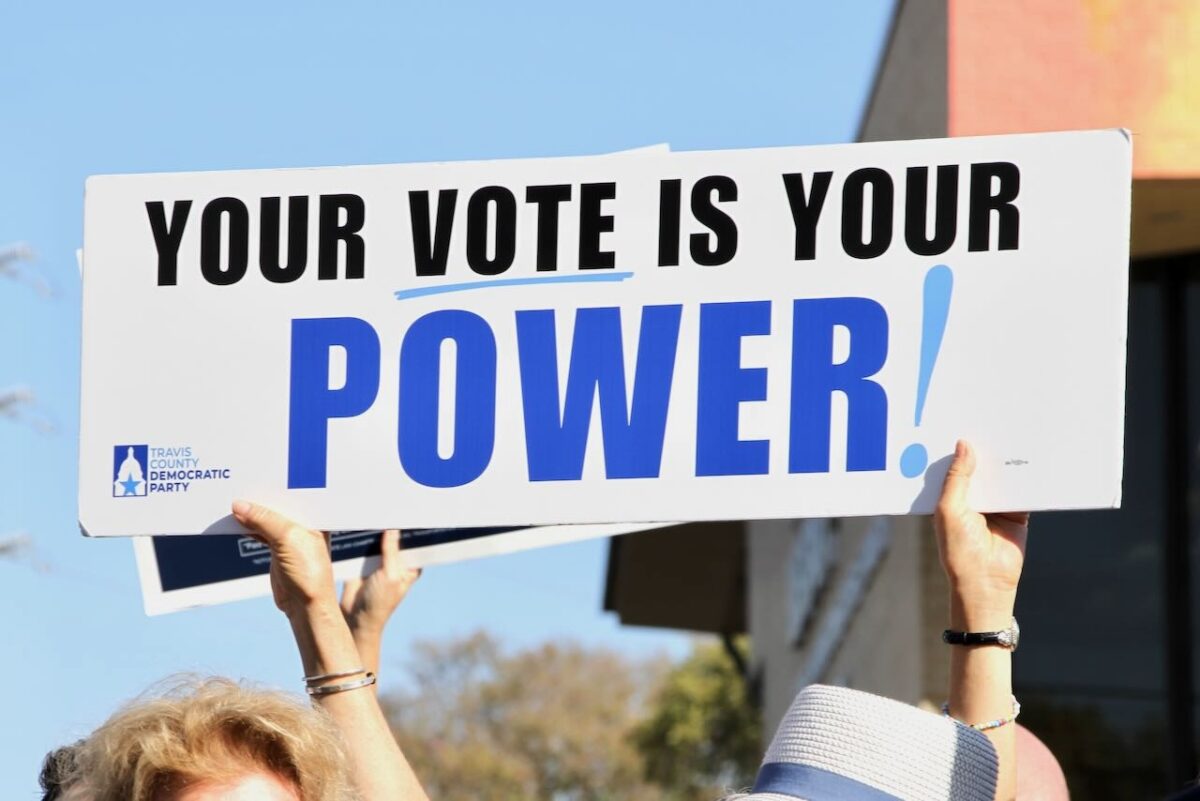
Workers continue to build rows of solar panels at a Mesquite Solar 1 facility under construction in Arlington, Ariz., Sept. 30, 2011. One of President Joe Biden's signature laws aimed to invigorate renewable energy manufacturing in the U.S. It will also helped a solar panel company reap billions of dollars. Arizona-based First Solar is one of the biggest early winners from the Democrats' Inflation Reduction Act, offering a textbook case of how the inside influence game works in Washington.(AP Photo/Ross D. Franklin, File)
As votes are cast across Texas, the future of American energy is on the ballot in the 2024 Presidential election, and the consequences matter to our pocketbooks, to our business, and to our planet.
The days where climate change was some abstract concept divorced from our daily lives are over. We feel it when we walk outside and get hit with record-breaking heat, not just once but day after day.
The energy we use impacts people’s lives daily…from Hurricane Helene one day to Hurricane Milton the next…to the extreme heat affecting workers in the Southwest…to the wildfires that rage in California…to the trillions of dollars investors want to triple in the market.
Amidst all the extreme weather crises, there is a silver lining: we no longer have to choose between our economy, our jobs, and lowering our utility bills on one hand, or fighting the pollution and climate change that is fueling these events on the other. Thanks to the game-changing clean energy investments passed by President Biden and Vice President Harris, we can fight climate change and lower air pollution all while creating millions of good-paying jobs and exponentially increasing our overall energy production to bring down utility costs.
If Harris is elected president, she would have the necessary runway in a second term to finish the job of those clean energy investments, so that the record number of factories being built right now could actually come on line and start humming, producing paychecks, and rejuvenating local communities.. That law makes the largest investment in climate and clean energy in not only the history of America…but the history of the world. Which means that we are already seizing back leaderships on clean energy and other industries of the future from competitors like China, after previous presidents like Donald Trump let them jump ahead.
History suggests it takes a decade or more for industrial transformations to deeply root, as was the case with the transition from horses to the Automobile Age, from manual computing to digital technology, and from high cost, low quality health insurance to the protections we take for granted from the Affordable Care Act.
The climate law does this with a government-enabled and private sector-led approach, providing ten-plus years of certainty through expanded and enhanced clean energy tax credits, signaling to businesses that they can think big and make long-term decisions.
These policies are working. The private sector has announced over $400 billion in new clean energy investments, over half of that announced since the IRA passed, creating more than 400,000 good paying jobs you can support a family on.
This economic activity is beginning to change communities across the nation, from Weirton, WV to Muskegon, Michigan, from Dalton, Georgia, to Moses Lake, Washington. In 2023, clean energy jobs grew at a rate faster than the rest of the traditional energy sector and twice the rate of the overall US job market.
Private companies have announced plans for more than 800 new or expanded clean energy manufacturing sites. Over 80% of clean energy investments have gone to counties with below-average college graduation rates, demonstrating that working in the clean energy economy doesn’t require college degrees. All of this brings hope to families for a future where generational economic prosperity is possible.
A decade from now, more people will be paying lower utility bills, breathing healthier air, depending less on highly inflated, foreign-sourced energy components, and working in this new energy economy that was launched in the last two years.
With all this positive economic activity, one can only scratch their head in wonder why anyone would want to change the current course.
Which is exactly what Trump would try to do. Congress will have large-scale negotiations over energy tax credits in 2025, regardless of who wins the presidency. Senate Republicans’ number one priority will be extending Trump’s 2017 tax cuts (Tax Cuts and Jobs Act or “TCJA”) which expire after 2025. Republicans will almost certainly try to repeal as many energy tax credits as possible to fund TCJA’s extension, which favors the wealthy and large corporations.
Eighteen House Republicans last month asked the Republican House Speaker Mike Johnson not to cut clean energy tax credits because they “spurred innovation, incentivized investment, and created good jobs in many parts of the country” — but if they are forced to choose between those credits and voting down Trump’s signature tax cut, aimed squarely at the wealthy donors who funded their campaigns, it would be foolish to count on them to do what’s right.
Repealing these investments would doom hundreds of thousands of new jobs already announced; it would doom efforts to build our supply chains here at home; it would doom our communities to dirtier air and water, with home energy at a higher price; and it would doom our planet to dire effects of climate change that make what we see now look like a prelude.
America has begun the most consequential energy transformation we will see in our lifetimes, with more energy choices than ever before coming all the time, and along with it a generation of good jobs and restored American leadership. So, imagine if Harris wins and builds on the clean energy transition. Imagine how large these new industries will become, how many quality jobs they will create, how many low-income communities they will strengthen. Picture cities and towns growing around them without partisan constraints. Imagine fewer places recording the “hottest day ever.”
On November 5th we will know whether America’s energy future will be run by a new generation of leadership or slowed down by the old energy playbook from our past, burying our feet in the mud while our competitors race gleefully past us to dominate the century ahead.














